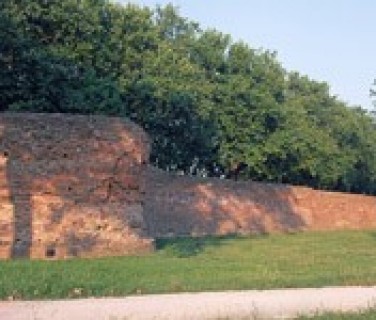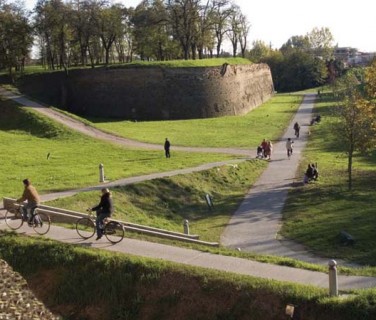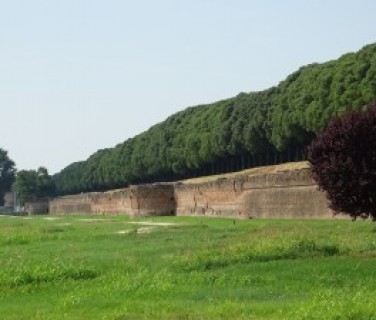
5.0
Sight
The first fortifications for the defence of a river ferry in Ferrara were built by the Byzantines around the 6th century, and later, to protect a second ferry, other defensive walls were added in the 10th century, by Tedaldo of Canossa.Later, when the new cathedral was built further north than the pre-existing basilica, the walls had an organic imprint of defense north of the new city center, and their extension also expanded. In 1314 the walls also included the area of Borgo Vado, and the first sections of brick curtains appeared. Historians report a door present then in the area, which corresponds to the modern street Ripagrande.La most prestigious door, in the late 15th century, was the Gate of Angels, in the northern part of the walls, from which the guests entered the city it was for example through this door, in 1598, that Caesar d'Este left the city, returned to the Pontifical State, to move the capital to Modena. The Gate of Angels, however, is not the only one dating from that era: in Ferrara you could enter from the south through the Paola Gate and from the east passing under the Gate of St. John.Along the entire perimeter, the walls retain the ramparts, some of which are not perfectly preserved, designed for the defense of sieges conducted with firearms and surrounded by ditches no longer visible, they were equipped with gunboats and show, even today, the shape of a spree or a pike. They are mainly present in the southern part of the walls.
Other senses involved
Accessibility / Transportation
Subcategory
Multimedia
44.838133
11.619709
Largo Castello, 1, 44121 Ferrara FE
2000
WALKING
km
en
15
100%
180px
https://adrion5senses.eu/wp-content/uploads/2019/09/Sight-2.png

-1
38
40
37
90
Distance
Address
Walking time
min
Details
- Largo Castello, 1, 44121 Ferrara FE













